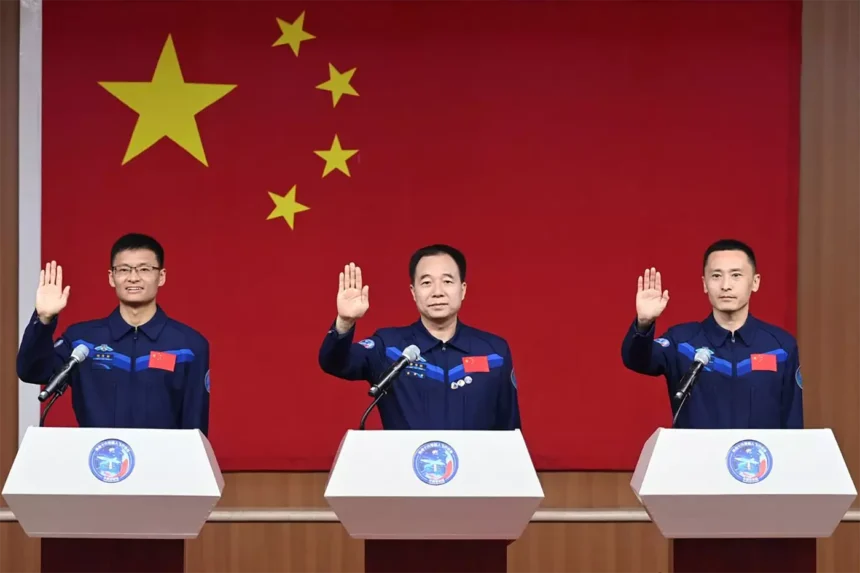In an unprecedented move showcasing its growing space ambitions, China recently launched, with Shenzhou-16 mission, three astronauts, including its first-ever civilian, into space.
This feat occurred amidst the country’s announcement of expedited plans to land astronauts on the lunar surface by 2030, a plan that pitches China into a new space rivalry with the United States.
The United States’ National Aeronautics and Space Administration (NASA), under the administration of Bill Nelson, has projected to return American astronauts to the moon by 2025, a race reminiscent of the Cold War-era space competition. However, the new rival is not the Soviet Union but China.
China’s lunar ambitions were explicitly confirmed on Monday by Lin Xiqiang, the Deputy Director of the China Manned Space Agency. He outlined the nation’s ambitious strategy for technical and scientific research, including a revised timetable that fast-tracks China’s lunar landing before the initially proposed 2030 deadline.
“The primary objectives are to orchestrate China’s maiden manned lunar landing before 2030, conduct explorative scientific studies and perform relevant technology demonstrations on the lunar surface,” said Lin at a news conference. He elaborated further on China’s goal to develop a commuting and short-term stay system for crew members, advancing human-robot integrated testing and other vital technologies.
You maybe interest to read:
PlayStation Project Q, A Deeper Look into PS5’s Upcoming Accessory
TikTok Leaps into AI Chatbot Arena
“GTA 6”: An Impending Megahit Nearing the Horizon
Launched from Jiuquan Satellite Launch Center in northwestern China, the Shenzhou-16 spacecraft, powered by a Long March 2F carrier rocket, embarked on its journey to the Tiangong space station with three astronauts on board. Among them is Gui Haichao, a professor from Beihang University, marking the first Chinese civilian in space.
This significant event follows the commissioning of the Chinese space station last year, with a projected 15-year lifespan. This longevity could see the Tiangong station becoming the solitary permanent research facility in orbit after the planned decommissioning of the International Space Station in 2030.
China’s impressive space track record includes landing a rover on Mars, deploying a robotic spacecraft on the moon’s far side, and maintaining a space station in low Earth orbit. These achievements reflect President Xi Jinping’s emphasis on harnessing “the vast cosmos” and foster a sense of national pride in China’s technological advancements.
Further augmenting China’s moon-oriented agenda, in 2021, China and Russia revealed a joint plan to construct a lunar research station, commencing work near the moon’s south pole in the mid-2030s.
In contrast, the United States has been taking strides to establish norms of behavior in space and lunar activities. This effort was evidenced by the invitation to allied nations to sign the Artemis Accords, a significant agreement governing space conduct.
Bill Nelson, the NASA Administrator, regards China as an “aggressive competitor” in space, signaling a renewed commitment from the United States to be the first to return to the moon. However, it remains to be seen how this interstellar contest will play out as China continues to make strides towards becoming a space superpower.
This renewed space race, fueled by nationalistic pride and geopolitical rivalry, undoubtedly signals a new era of competition, cooperation, and the quest for cosmic discovery. As the 2030s approach, the world will undoubtedly be watching with bated breath.
Click on this link to read this article in French version
















